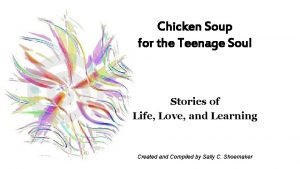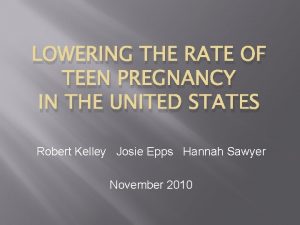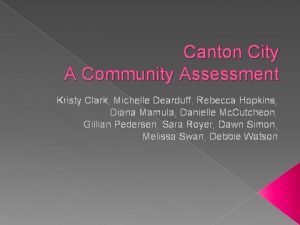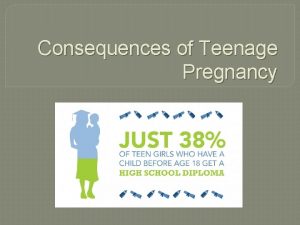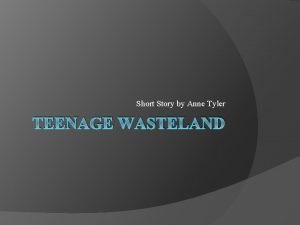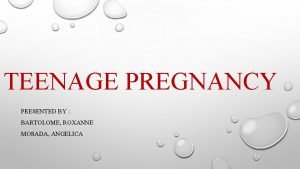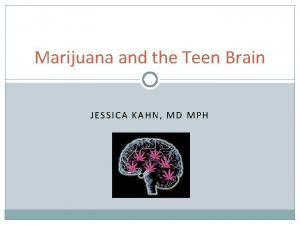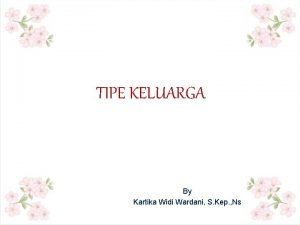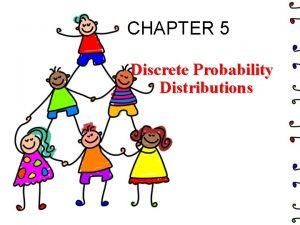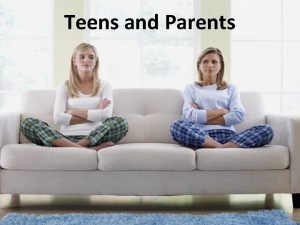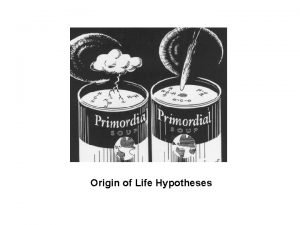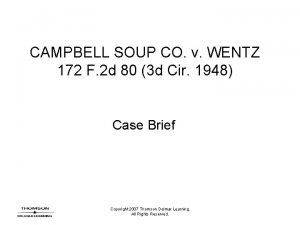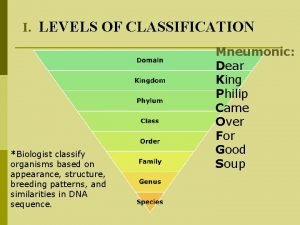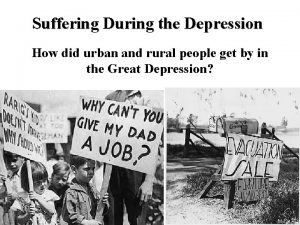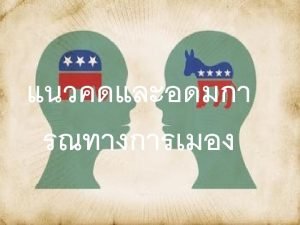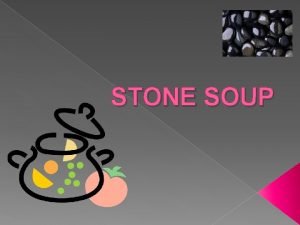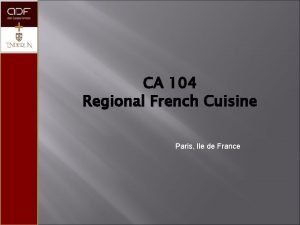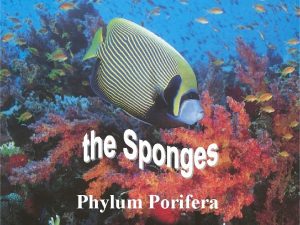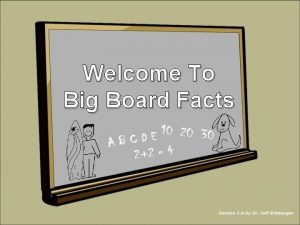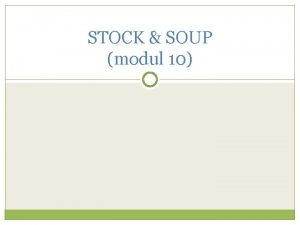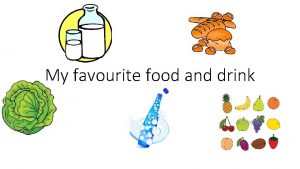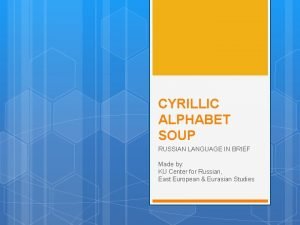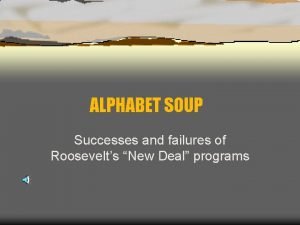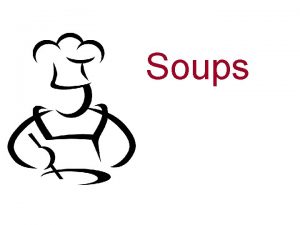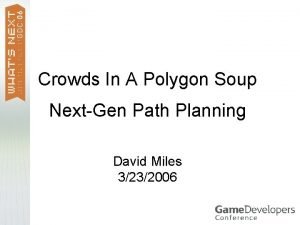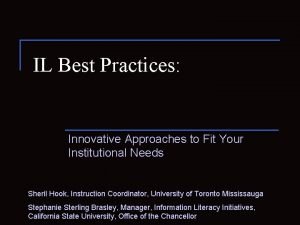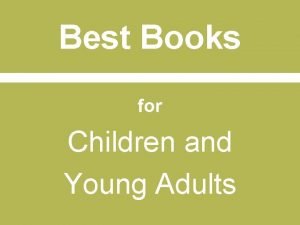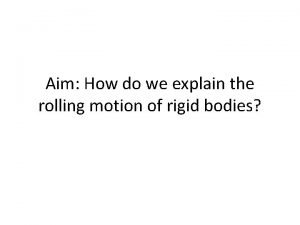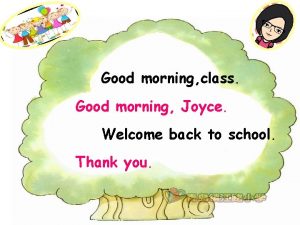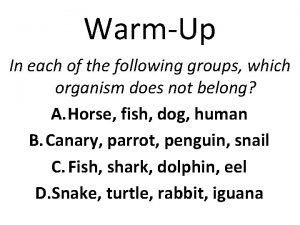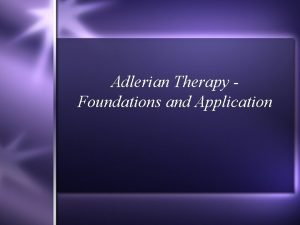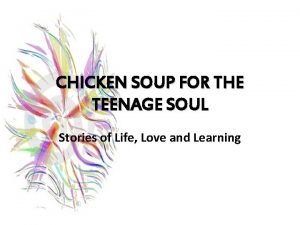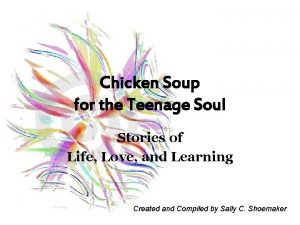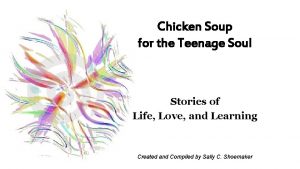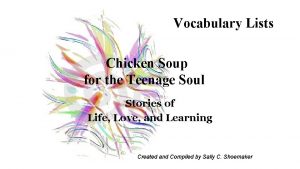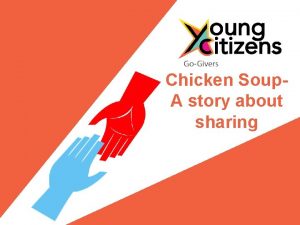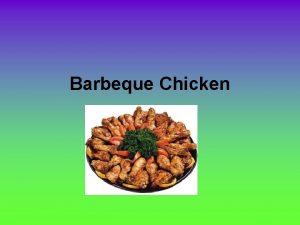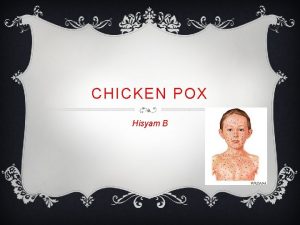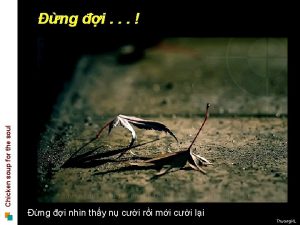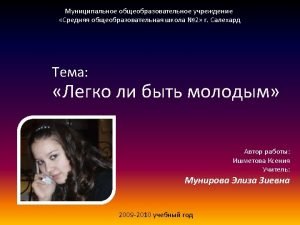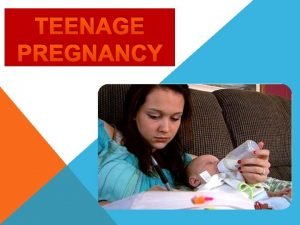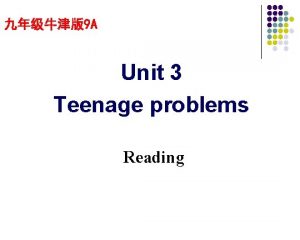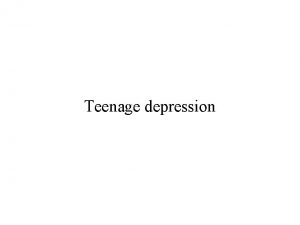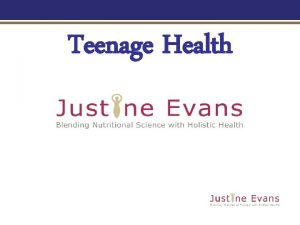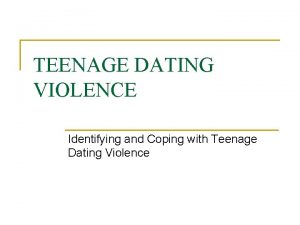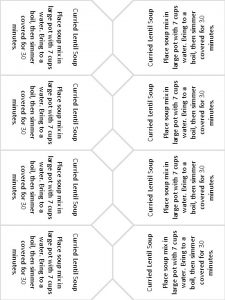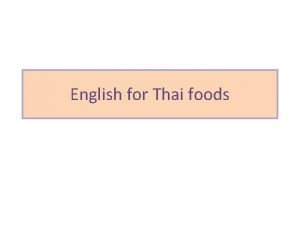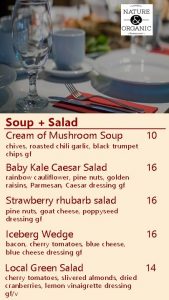Chicken Soup for the Teenage Soul Stories of




























































































































- Slides: 124

Chicken Soup for the Teenage Soul Stories of Life, Love, and Learning Created and Compiled by Sally C. Shoemaker

• Vocabulary List #1 1. 2. 3. 4. 5. spontaneous - 150 profession - 157 shadowing - 160 consolation - 179 mediocrity - 179 • Stems 1. 2. 3. 4. 5. ous – full of con – together med – middle pro – forward tion – act or state of

• Vocabulary List #1 1. raggedy (Literature p. 300) 2. vulnerable - 147 3. spontaneous - 150 4. profession - 157 5. brilliance - 157 6. shadowing - 160 7. consolation - 179 8. astonished - 179 9. content - 179 10. mediocrity - 179 • Stems 1. 2. 3. 4. 5. ous – full of con – together med – middle pro – forward tion – act or state of

Learning Target: Central Ideas • When you are sick, what makes you feel better? • Write this question in your journal. • Make a list of items or actions that make you feel better when you are sick. • Be prepared to share your list and explain each item.

• What is an epigraph? • a relevant quotation at the beginning of a book or chapter 1. Read each epigraph. 2. Choose which one is your favorite. 3. Copy this in your journal. 4. Explain why you chose this particular quote. Epigraphs are found on pages 1, 35, 61, 101, 145, 185, 217, and 245. • The Introduction • “How to Read This Book” • jumping around • poetry, prose, fiction, non-fiction

Learning Target: Theme • Have you ever been disappointed by your birthday? • Write a paragraph describing a birthday that was a disappointment. • Write another paragraph about a birthday that was fantastic!

What is theme? • Look for the definition in the reference section of your literature text. • Read this definition and discuss it with your partner. • Re-write this definition in your own words. • “Eleven” by Sandra Cisneros – Literature Book p. 298 • As you read, think about theme of the story.

• Writing Response: “Eleven” • Choose two of the response choices below to complete in your journal. 1. Do you agree with Rachel’s idea that, no matter how old we are, we always have all the ages we have been inside of us? Why or why not? 2. If you were Mrs. Price, how would you have handled the situation with Rachel? 3. Why do you think Phyllis Lopez at first didn’t say the sweater was hers? 4. How does Cisneros make us understand how Rachel feels? Give examples from the story of descriptions and language that helped you understand Rachel’s feelings.

• Writing Response: “Eleven” • Choose one of the response choices below to complete in your journal. 1. If you were Rachel, what would you have done? To answer this, write a dialogue between Rachel and Mrs. Price. Begin your dialogue with: Mrs. Price: Of course the sweater’s yours. I remember you wearing it once. (Continue the dialogue any way you want. ) 2. What sense do you have of Rachel from reading this story? Write a description of Rachel – how she looks, what she’s like as a person, what her family is like, what she wants to do in the future – based on the information in the story and your imagination.

Learning Target: Comparing Details • Describe your favorite teacher of all time. • Use a Bubble Map • Include as many adjectives as you can to describe this teacher.

• “Mrs. Virginia De. View, Where are You? ” • Read this selection on page 157. • Compare the teachers in this story and in “Eleven. ” • Create a Double Bubble Thinking Map to compare the two teachers. • Which teacher would you rather have? Why?

• Writing Response • What are the qualities of an ideal teacher? • Describe this teacher. • Make sure to be realistic, practical, and logical. • Write your response in your journal.

• Writing Response • What are the qualities of an ideal teacher? • Describe this teacher. • Make sure to be realistic, practical, and logical. • Write your response in your journal. • Then draw a diagram of the ideal teacher. Make sure to label the elements. eyes to read and look at the teacher brain for thinking ears to heart for caring mouth to share ideas The Perfect Student hands for writing feet for moving toward success hands for opening books

Learning Target: Author’s Purpose & Characterization • What kind of character are you? • Make a list of character traits that would be used to describe you. • Write a paragraph describing yourself. • “Sparky” page 179 • As you read, think about the author’s purpose. • What is the author trying to tell us? • Write a sentence identifying the author’s purpose. • List three (3) details from the story that supports your purpose.

• Written Response: Comparing Traits • Think about the cartoon, Charlie Brown, and when he tries to kick the football. • Compare the traits of Sparky with those of Charlie Brown. • Read “Zuri at Bat. ” • How would you compare Charlie Brown and the football to “Zuri at Bat. ” • Who do you relate to more? • Write an argumentative paragraph to support your opinion on the author’s purpose. • Write your response in your journal.

• Written Response: Comparing Traits • Think about the cartoon, Charlie Brown, and when he tries to kick the football. • Compare the traits of Sparky with those of Charlie Brown. • Read “Zuri at Bat. ” • How would you compare Charlie Brown and the football to “Zuri at Bat. ” • Who do you relate to more? • Write an argumentative paragraph to support your opinion on the author’s purpose. • Write your response in your journal. • Now create a comic strip for “Zuri at Bat. ”

Learning Target: Analyzing Main Idea • TROUBLED TIMES • Describe a time when you got in trouble or upset your parents or guardian and learned from your mistake. • Write about this experience in your journal.

• Read these selections. • While reading, complete this chart. Story “Egg Lessons” Page 146 “The Cost of Gratefulness” Page 150 “Unconditional Mom” Page 70 What does the How does his or teen do wrong? her parent react? What did the teen learn? What can readers learn?

• Written Response: Essay • Compare the teen protagonists in the three stories. Tell how they are alike and how they are different. • Determine which teen learned the most valuable life lesson and which parent did the best job teaching a lesson. (The teen and parent do not have to come from the same story. ) • Write this essay in your journal. • Remember, essays need an introduction, a body, and a conclusion.

• Vocabulary List #2 1. 2. 3. 4. 5. sage - 36 interfered - 38 luminous - Dove indignant - 90 finale - 93 • Stems 1. inter – between 2. 3. 4. 5. lum – light in – in or not dign – worthy fin - end

• Vocabulary List #2 1. gossip - 36 2. sage - 36 3. interfered - 38 4. occasional - 38 5. beheld - Brooks 6. lingers - Brooks 7. flounces - Dove 8. luminous - Dove 9. indignant - 90 10. finale - 93 • Stems 1. inter – between 2. 3. 4. 5. lum – light in – in or not dign – worthy fin - end

Learning Target: Analyzing Key Concepts • How can you prevent bullying? • Write an answer in your journal. • Focus on actions! • Reading Selections • “The Gossiper” page 36 • “A Simple Christmas Card” page 38 • “Betty Ann” by Ina Hughs

• Written Response: Making it Personal • Write about a time when you or a friend were hurt by gossip or bullying. • Make sure to include the outcome; what happened. • Write an alternative outcome either positive or negative. What might have happened if the situation would have been handled differently.

• Written Response: Making it Personal • Write about a time when you or a friend were hurt by gossip or bullying. • Make sure to include the outcome; what happened. • Write an alternative outcome either positive or negative. What might have happened if the situation would have been handled differently. • Write a letter to a student who is being bullied. Give advice on how they should handle this. Make suggestions for what they should do. • Write these responses in your journal.

Learning Target: Imagery • Family & Home • Using your own words, write a definition for each word. • Write these entries in your journal.

• Pre-Reading Discussion • Look at the quote on page 61. Do you agree or disagree? • If you had to describe your family as an animal, which one would it be and why? • Contradiction • Which part of the quote contains a contradiction? • Give other examples of situations that you may want to escape from but at the same time you wish to remain in…like family.

• What is Imagery? • Using your own words, write a definition of imagery in your journal. • Painting a picture with words. The words engage all your senses to create a full picture.

• What is Imagery? • Imagery is not only visual images. • It incorporates imaginative language that describes all sensory experience including sound, taste, touch, smell, and sight. • “My Grandmother is waiting for me to come home. ” • Before reading. . . • Divide one page of your journal in half. On the left write a description of your grandmother’s house. • After reading… • On the right, write a description of what you remember from this poem. • Go back to the poem, underline the details that engage the five senses.

• Written Response - “Fifth Grade Autobiography” • Write a poem that contains detailed imagery describing you and your family or you and your home at an earlier point in your life. • Use themes of home and family. • You can incorporate a picture of your younger self.

Learning Target: Point of View • Family & Home • Look back at your first definitions. • Do you need to rewrite those definitions now that we have read more selections? • Traits List • Create a chart in your journal with traits down the column on the left and the titles of the four stories across the top. (This will later become a larger chart you will present to the class. ) • Complete these checklists as you read today.

Trait Caring/Love Rely/Trust Related (Blood or Marriage) Friendship Constant Never-ending Traits of Family “She Didn’t “Lessons in “The Champ” “I am Home” Give up on Baseball” - 89 - 92 - 97 Me” - 63

• Jigsaw Activity • Read the story you have been assigned first. • Complete the chart in your journal. • Read another story of your choosing and complete the chart. • Read as many as you can. (Look for vocabulary words!) • Reading Selections 1. 2. 3. 4. “She Didn’t Give Up On Me” page 63 “Lessons in Baseball” page 89 “The Champ” page 92 “I am Home” page 97

• DAY 2 • Create a poster about ONE of the stories. • Make sure to include all the information you collected. • Include information on any vocabulary words you found. • Presentations • Use your poster to “teach” the class about family and home. • Speak clearly. • Be prepared. • Make sure your name is on your poster.

MY EPIGRAPH • Family Quotes • Refine your definition. • Create a quote that you will use in our next writing assessment.

Learning Target: Symbolism • Love & Kindness • Look back at this epigraph. • How do you reflect on this quote now? • Write this in your journal. • Choice Reading • Read one of these stories. • “Tigress” page 102 • “Bright Heart” page 106

• Written Responses • For “Tigress” - Can animals be family members? • How do you reflect on the quote on page 101 now that you have completed the reading? • Write a journal entry that answers this question. • For “Bright Heart” - To Hug or Not to Hug? • In both stories, characters show their kindness and love by offering a hug to a virtual stranger. • Are there times when hugs are and are not appropriate? • Why are hugs so powerful? • Write a journal entry about a time when you needed, received, or gave a hug that either comforted you or someone else.

• Vocabulary #3 1. 2. 3. 4. 5. barren – Hughes 19 recognized – “Family” diversity – “Family” optional – “Family” nuclear - “Family” • Stems 1. 2. 3. 4. 5. cogn – know di – two re – again opt – best nuc - center

• Vocabulary #3 1. suede – Hughes 18 2. barren – Hughes 19 3. recognized – “Family” 4. nuclear – “Family” 5. prevalent – “Family” 6. evolution – “Family” 7. optional – “Family” 8. trends – “Family” 9. diversity – “Family” 10. mobility – “Family” • Stems 1. 2. 3. 4. 5. cogn – know di – two re – again opt – best nuc - center

Learning Target: Point of View & Author’s Purpose • Dialect List • Make a list of words or phrases that are examples of dialect. • Remember, dialect is a regional variety of language distinguished by features of vocabulary, grammar, and pronunciation from other regional varieties and constituting together with them a single language.

• “Thank You, Ma’m” by Langston Hughes • Draw this dialect chart in your journal. Dialect ain’t • Context I ain’t gonna do that. Meaning aren’t, are not, or am not Rewrite the sentence without the unique dialect to demonstrate comprehension. I am not going to do that. As you read today, write examples of dialect that you notice in the story.

• Written Response: Roger’s Point of View • • Imagine that you are the boy. Write a journal entry detailing what happened and how you felt as you walked home. Make sure to refer to specific events that happened in the story as you write your reaction. Think about these questions: • • • How did the woman’s kindness affect the boy? What lesson did she think she was teaching him? What was the author’s purpose in writing this story? What did he hope readers would learn from it? How could you apply the lesson in this story to your life? How is this story a tale of love and kindness?

Learning Target: Supporting Details • Family Style • There are many different types of families. • Write a paragraph describing your family. Look back to the definition that you wrote and to ideas that you have already collected on the traits of family.

• Family: Collecting Information • How Family Structure Has Changed • List ideas in your journal that explain how families are different today than they were in the past. • Group Readings • Read the assigned article with your group and answer the following questions in your journal. A “Emotional Kevin Durant says his mom is ‘the real MVP’” Describe his family structure. B C Kids are spending way too much time online, doctors group warns The city’s the place to raise their kids, more parents say Describe this challenge for the family. Describe what has changed. What has caused this issue? What challenges did he face? What do cities need to do for families? What can be done? What are the benefits of city life? What lessons did he learn? What advice can you take? How can city life improve learning? What did he learn to value?

• Written Response: Your Point of View • • Imagine that you are going to give a speech on Family. What elements would you want to include. Write a journal entry detailing what you would include in your speech. Your list can include: • • Ideas from what you have read. Definitions Examples Personal Stories

Learning Target: Textual Evidence Writing Assessment: What is Family? Argumentative Elements to include: Claim Reasons & Evidence Call to Action What writing plan could you use as your pre-writing?

Writing Assessment: What is a family? Argumentative 1. Sections 3 and 4 of Chicken Soup for the Teenage Soul feature stories of love, kindness, and the complicated nature of families. 2. After reading these sections, write an argumentative essay that takes a stance on the following question: What is a family? 3. Do you believe that families only consist of people who are related by blood, or can people who are not biologically related, like stepsiblings or an adoptive parent and child, become just as close as traditional families? 4. To begin this essay, write your own definition of family. 5. Then use examples from Chicken Soup, other stories and poems read in class, movies and television, or your life to defend your point. 6. In your conclusion, summarize your main points to convince your audience to agree with your definition of family. 7. You must use at least 5 vocabulary words from the last two lists in your essay.

• Plan the Writing Assessment. • Use a Tree Map to Plan for Writing Your Claim (Introduction) First Point Second Point Third Point Conclusion Ideas Evidence & Supporting Details Summarize & Make your Final Point • Share your plan with your partner. Give each other feedback.

• Plan the Writing Assessment. • OR - Use a Box Chart THIS IS THE MINIMUM! Paragraph Task Introduction Define Family and Make Your Claim Reason #1 Ideas, Evidence & Supporting Details Reason #2 Ideas, Evidence & Supporting Details Reason #3 Ideas, Evidence & Supporting Details Conclusion Summarize & Make Your Final Point • Share your plan with your partner. Give each other feedback.

• Parts of an Essay • What are the basic parts of an essay? • Which part of your writing plan will you use to create which part of your essay? • What is a thesis statement?

Don't Touch That Towel! By Shannon C. I think our school would benefit by investing in automatic motion-sensing hand dryers. I have several reasons for this. Children can get sick from the germ-infested paper towel dispensers we now have. There is also terrible waste when students continuously pull the lever, dispensing towels they don't really need. First of all, this automatic hand dryer is very sanitary. Instead of pulling on a lever that has been touched by a large number of students, users can just stick their hands under the blow-dryer. No germs can get on them because there is nothing to touch. In addition, if we buy this automatic hand dryer, we can save the school budget and trees. The money we save by not wasting paper towels can be used for educational things, such as field trips. We could even go to a tree farm and see how many trees we saved. Cutting fewer trees will make a big difference in the environment. If the electricity happens to go out, the hand dryer, like all electric appliances, will go out too. That is ONE bad thing, but we know the lights don't go out that often. We will store extra paper towels in the custodian's room for emergencies. So I think there is much to be said for this automatic motion-sensing hand dryer. Administrators will be glad to know that absenteeism will be lowered. Money can be saved. Finally, if the trees could talk, they would probably shout for joy, knowing that a whole school is saving a forest. Let's install automatic hand dryers at our school as soon as possible.

Learning Target: The Writing Process What is the difference between revising & editing? • • • Focus on Revising Focus on Editing Check for Writing Felonies!

Focus on Revising & Editing Writing Time: Use Your Writing Plan as Your Checklist Peer Edit with your writing partner.

Learning Target: Argumentative Writing Vocabulary Homework is DUE TODAY! Vocabulary Test #1 Writing Assessment: What is family? Argumentative Final Drafts DUE TUESDAY!!!!!

• Vocabulary List #4 1. intact - 1 2. daze - 4 3. endure - 7 4. spectacle - (Literature, p. 319) 5. respectable - (Literature, p. 325) • Stems 1. in – in or not 2. tact – touch 3. spec – look 4. re - again

• Vocabulary List #4 • Stems 1. intact - 1 1. in – in or not 2. daze - 4 2. tact – touch 3. pursued - 5 3. spec – look 4. complication - Swift 4. re - again 5. endure - 7 6. lisp - (Literature, p. 307) 7. lithe - (Literature, p. 307) 8. revolting - (Literature, p. 318) 9. spectacle - (Literature, p. 319) 10. respectable - (Literature, p. 325)

Learning Target: Intensive & Reflexive Pronouns • Intensive & Reflexive Pronouns: • List all the pronouns you can think of that end in -self or –selves. • Notes: Intensive & Reflexive Pronouns • Practice!

Learning Target: Comparing Texts • Relationships: • Read the Jamison Quote on page 1. • In your journal, discuss the quote and give an example of a time when you drifted apart from someone. • Reading Selections: • “Losing the Us” page 3 • “The Story of Us” by Taylor Swift • Compare these two selections using an appropriate thinking map or graphic organizer.

• Written Response • Craft a written response that includes the following information: • How are the texts similar? • How are they different? • Which one represents how you think most teens feel about breakups? Explain. • If the story was rewritten as a song and recorded by Taylor Swift, what would the video look like?

• Written Response • Craft a written response that includes the following information: • How are the texts similar? • How are they different? • Which one represents how you think most teens feel about breakups? Explain. • If the story was rewritten as a song and recorded by Taylor Swift, what would the video look like? • Now, adapt the story into a song.

Learning Target: Irony • What is irony? • Write a definition of this literary element in your journal. • Irony is the use of words to convey the opposite of their literal meaning; a statement or situation where the meaning is contradicted by the appearance or presentation of the idea. • Example: It is ironic that the name of Britain’s biggest dog is Tiny.

• Reading Selections: • “After Awhile” page 7 • “The Miss of a Great Miss” page 11 • Draw this chart in your journal. Example of Irony What do they really mean.

• Written Response • Find other examples of irony. • Locate poems or stories. (You can also use library books, the literature books, or music that you already know. )

Learning Target: Central Ideas • Challenges: • Make a list of challenges that families face today. • Reading Selections • “My Parents” Literature p. 307 • “Same Song” Literature p. 311 • “The All-American Slurp” Literature p. 317

• Written Response • Create a sign or brochure to help students deal with a challenge. • Choose any challenge that you would like. • Create a sign or brochure to help students deal with this challenge. • These should be positive and encouraging. • We will be posting these here at school.

Learning Target: Analyzing & Interpreting Media • What inspires you? • Make a list of things, people, or events that inspire you. • Reading Selection • “Speak Life” Toby. Mac

• Written Response • Create a sign or brochure to help students deal with a challenge. • Choose any challenge that you would like. • Create a sign or brochure to help students deal with this challenge. • These should be positive and encouraging. • We will be posting these here at school.

• Vocabulary List #5 1. commitment - 220 2. passionate - 241 3. discord - 244 4. confounding - 266 5. sensation - 266 • Stems 1. com – together 2. ate – cause 3. dis – away 4. cor – heart 5. sens - feel

• Vocabulary List #5 1. redeemed - 218 2. betrayal - 218 3. commitment - 220 4. cringed - 240 5. passionate - 241 6. reinforce - 242 7. discord - 244 8. diligent(ly) - 244 9. confounding - 266 10. sensation - 266 • Stems 1. com – together 2. ate – cause 3. dis – away 4. cor – heart 5. sens - feel

Learning Target: Main Ideas & Supporting Details • What is Success? • Define the word “success” in your own words. • Make three different lists of people who you think are successful. People in Your Family People in Your School People in the World • Name at least three (3) things all of these people have in common.

• Reading Selections • “What is Success” page 218 • “Be Cool – Stay in School” page 219 • Written Response • How would Jason Summey define success? • Using 2 -3 examples from the text, write a paragraph that answers this question.

• Reading Selections • “What is Success” page 218 • “Be Cool – Stay in School” page 219 • Written Response • How would Jason Summey define success? • Using 2 -3 examples from the text, write a paragraph that answers this question. • We are going to gather these paragraphs into a booklet. As a class, write an introduction explaining that success means different things to different people. Then write a conclusion examining why people have different opinions on success.

Learning Target: Analyzing Text Parts • Reflection • Reflect on the quote on page 240. • What does this “sentiment” mean to you? • Reading Selections • “Broken Wing” page 240 • “Passing the Dream” page 243

• Paraphrasing: A paraphrase is a restatement of a text or passage in another form or other words, often to clarify meaning. • Written Response 1. Write an analysis of the poem, “Passing the Dream. ” (Explain what the poem means using your OWN words. ) 2. Paraphrase each stanza.

• Written Response Write two additional stanzas to this poem. 1. In the first, the teen is older now and meets you. Something in this stanza must give a hint to present day and current problems. 2. In the second, write the advice the now grown teen passes along to you. Make sure to use some of the same style and phrases the author uses.

Learning Target: Central Ideas & the Mechanics of Writing • Describe a time when you had to “go for it. ” • Reading Selection • “Helen Keller and Anne Sullivan” page 264 • What You Do Not Know • Common Usage Errors • Writing Review

Learning Target: • Intensive & Reflexive Pronouns Test: • Take out a sheet of paper • Put your heading in the upper right hand corner. • Number 1 to 20. • DO NOT WRITE ON THE TEST! • Turn the test and your answer sheet in to the baskets on the front table. • Catch Up Day! – Complete assignments and/or Second Opportunities.

• Vocabulary List #6 1. profile – Soto 1 2. evacuated – L 749 3. concentration – L 749 4. ultraviolet – L 180 5. conducted – L 182 • Stems 1. pro – forward 2. vac – empty 3. centri = center 4. ultra – beyond 5. duct – lead

• Vocabulary List #6 • Stems 1. profile – Soto 1 1. pro – forward 2. evacuated – L 749 2. vac – empty 3. concentration – L 749 3. centri = center 4. wilted – L 749 4. ultra – beyond 5. register – L 751 5. duct – lead 6. ultraviolet – L 180 6. som - body 7. conducted – L 182 8. cumbersome – L 182 9. trudged – L 183 10. forlorn – L 183

Learning Target: Narrative Writing • What characteristics or behaviors does a “good” writer have? • Write this question in your journal. • Write a description of what a good writer IS and what a good writer DOES.

• Being the Writer • A Good Story to Tell • Small Moments • “The” + a Noun • • Think of a person who matters to you Think of a place that matters to you - perhaps where you lived for a long time Think of an event that has significance in your life Create this list in your journal. • Writers look for Help • Peers • Teachers • Texts

• “The Jacket” by Gary Soto • What makes this good writing? • What did the author do that makes this successful.

• How to Write Powerful Personal Narratives • • Focus on One Episode Write with Detail Don’t Summarize a Stretch of Time Help Readers Picture the Episode - a small action and exact dialogue

• Your Turn to Write • Look back at your story list. • Read through your list. • Have you thought of anything else you would like to add. • Which one of these titles is “playing” in your brain? • Circle your top 3 titles. • Now…WRITE UP A STORM!

• Time to Reflect • Explain to your partner what you have accomplished today. • Set a goal for what you need to complete for homework. • Make a plan for success.

Learning Target: Writing a Personal Narrative • Where do you think authors get their story ideas? • Write this question in your journal. • Make a list of “things” that you believe give authors story ideas. • Mentor Text #2 – “The Bracelet” – p. 746

Strategies for Generating Personal Narrative Topics • • Think about a person who matters to you, list Small Moment stories, choose one and write the whole story. Think about a place that matters to you, use pictures and quick notes to jot about the small moments that occurred there, choose one, and write the whole story. Think of first times or last times you did something, list Small Moment stories you could tell about each, choose one, and write the whole story. Think of moments that really mattered because you realized or learned something, list those moments, choose one, and write the whole story.

Writing Time Reminders • Write to bring out a feeling. • Help your reader use their senses to see, hear, taste, touch and/or smell the experience. • You are the narrator - tell the story the way you see things at the moment.

How to Write Powerful Personal Narratives • • • Focus on One Episode Write with Detail Don’t Summarize a Stretch of Time Help Readers Picture the Episode - a small action and exact dialogue Think of a person, place, or moment in your life (maybe a first or last time, or a time when you realized something) that matters, and write a story about it. Climb inside the moment and write within the narrator’s point of view.

Clarify & Strengthen • Choose a new topic. • Write up a STORM. • Edit as you write. (Use the checklist in your journal. )

Learning Target: Collecting Evidence • Who is your favorite author and why? • Write this question in your journal. • Write a paragraph explaining why you like this author.

Mentor Text #3 “The Sand Castle” – p. 178 • What was it you were most affected by ? • How can you use it in your own writing? • What did the author do here?

Lessons from Our Mentor Text What has the author done that you can try? – List Three (3) new things to TRY. – “What do I need to do to complete this narrative? ” – Self Assessment

How to Write Powerful Personal Narratives • • • Focus on One Episode Write with Detail Don’t Summarize a Stretch of Time Help Readers Picture the Episode - a small action and exact dialogue Think of a person, place, or moment in your life (maybe a first or last time, or a time when you realized something) that matters, and write a story about it. Climb inside the moment and write within the narrator’s point of view. Make Characters say the words and use the tone that shows their personalities and hints at the bigger meaning of the moment. Explain why characters act the way they do. Zoom in on the small but powerful details that really capture big moments and feelings. Use the Narrative Writing Checklist to ask, “As a writer, what are my strengths? What are my needs? ” Then, plan your next steps as a writer.

Learning Target: Engaging the Reader • Look back to our mentor texts. • What did the authors do to make each beginning a memorable one? • How did they Engage the Reader? • Write these questions in your journal. • Write a paragraph explaining how the authors got and kept your attention.

Rehearsing for Writing • Look back at your story list. • Choose a new story to write. • We are going to write three (3) different beginnings using different strategies. • Dialogue or Quote • Action • Setting

“Eyes of Fire” Dead men tell no tales. Or so he had heard. Yet these dead men seemed somehow to cry out in silence, noiselessly shrieking out a story that had been kept secret for nearly four hundred years. Their skeletal remains lay about eerily, some held together by the remnants of rusted armor, one with its head uncannily perched on the desk beneath it. The sword that had probably brought about his death lay at his side. Perhaps it had once pierced through him, through flesh and sinew and organs; perhaps it had once been bathed in blood. Now the sword lay on the handsomely carved desk where the pieces of the dead man remained, side by side with the small bones of what had been a human hand, almost as if it was waiting to be used again. To be picked up and wielded in some form of ghostly revenge. Dead men tell no tales…. But this one shouted silently of his own murder.

“The Mangled Manslaughter Mistake” “Bushie, come back!” I yelled sternly. Bushie, my dog, was running wildly all over the park. She is an eight-year-old dog, and although I take her for a walk everyday (and have been for the past 7 ½ years), she acts as though she has never seen the outside world before. She is extremely moronic, which is surprising because soft-coated Wheaton terriers are supposedly a bright breed. She is also hyperactive – even though she is almost 60 years old in dog years, I can barely keep up with her. When she runs, her matted, tan hair flies back, as do her black, long ears. Her tongue always hangs to the left. She ends up looking like a tan, furry rocket guided by a black nose.

“The Island” It was the place of my heritage. It was the place of my roots and where my family lived. It possessed the most glorious palm trees I had ever seen. The mountains would stretch as far as the eye could see. Great clouds would cover the mountaintops. The place was my homeland, Cuba. I remember that when I used to live there I would leave my house and climb a small hill to get to my grandparents’ house. I would slowly climb the metal poles in their backyard and steal all of the grapes. They came in different shades of green and purple. Their sweet aroma would make my senses tingle. It was a feeling of ecstasy when their sweet nectar would pour into my mouth. The juice was so warm and refreshing.

Rehearsing for Writing • Write three (3) different beginnings using different strategies. • Dialogue or Quote • Action • Setting

Rehearsing for Writing Talking Lead (Dialogue or Quote) Action Lead Flashback Lead (Setting)

Learning Target: Word Meaning • Vocabulary Test #2 • Clear Your Desk • All you need is something to write with. • Turn the test in to the basket when completed.

Learning Target: The Writing Process • What do successful learners do? • Write this question in your journal. • Make a list of actions that a learner does to be more successful.

Looking at Our Mentor Text • Zoom in on small details when the moment is really big. • Put yourself back in the moment. Look back at your own writings. • Look at all your writing practice. • Choose your favorite paragraph.

Sharing Our Best • How do these relate to our mentor text? • How did the mentor text help you? Reading a text is NOT enough! • We MUST • Study It • Scrutinize It • Analyze It

Continuing Our Practice • Choose one of your beginnings. • List 3 goals for your new essay. 1. 2. 3. Write On! • Complete this essay for homework tonight.

Learning Target: Writing Effective Endings • How does your favorite story end? • Write this question in your journal. • Write a paragraph telling • What your favorite story is, • How it ends, • And why you like the ending.

• An Effective Ending • Ties up all details, • Completes the story, • Has the power to make your reader understand your story’s big meaning, • And gives last words to leave with your reader. • NOTES: Effective Endings

• The House on Mango Street • The last five paragraphs demonstrates the real struggle in Esperanza’s life. • Here is the important question to ask yourself. • What do I want my readers to truly understand about my journey as a character in this story?

• BEWARE and BE AWARE • Your story builds up to your ending. • Don’t let it be a disappointment to your reader. • HOMEWORK. • Finish your story. • Go back and make sure your story has no potholes.

Learning Target: Revising • Revising • What do we do when we focus on Revision? • Making Changes • Choose your most important scene and elaborate on it. • This should be a scene that is most important to the central meaning of the story. • Work with your partner if you are having trouble choosing.

ZOOM WRITING • ZOOM IN • Stretch Out • Take it Moment by Moment • Give ALL the Details • Take it Down to Slow Motion • ZOOM OUT • See how it fits in the entire story. • See how it puts the whole story in context. (Think Time and Place) • See how it connects past and future events. • WHAT’S THE POINT? • To Bring Out Your Intended Meaning

HOMEWORK • Volume is Important • As you continue to work on your draft, you might add a scene from the past, or a scene from the future – or maybe you’ll try both. • Either way, don’t forget what your story is about and how new scenes show the meaning to the reader.

Learning Target: Editing • What do you do when you focus on editing? • Write this question in your journal. • Make a list of actions that you perform when editing your writing.

• EDITING STRATEGIES – USE CUE CARDS • Read it Out Loud • Use your Partner to help you Check • Sentence Length • Spelling • Capitalization • Punctuation • Self-Assessment • CLASSWORK • Complete your Final Drafts

Learning Target: Preparing to Write • NOTES: The 100 Minute Writing Plan Part 1: Planning/Prewriting (15 minutes) Part 2: Draft (35 minutes) Part 3: Revise (20 minutes) Part 4: Prepare Final Draft (20 minutes) Part 5: Proofread (10 minutes)

• Preparation for Writing • Assess Your Practice Writing • Create a Note Card! • Read these three selections: • “Eleven” - 299 • “Same Song” – 311 • “Betty Ann”

Learning Target: Narrative Writing Narrative Prompt: Choose One • Option One: • Option Two: Reread the story of “Eleven” by Sandra Cisneros. From Rachel’s point of view, continue the story in a manner that details how Rachel felt once she arrived home. A well written narrative will provide the audience with the following: realistic character and setting development, descriptive details, dialogue, a logical sequence of events, narrative techniques, effective transitions, precise vocabulary, and closure/ resolution. Reread the story of “Betty Ann” by Ina Hughes. From Betty’s point of view, continue the story from the point where Betty’s parents are about to move her to another school. Change the story where the outcome is positive. A well written narrative will provide the audience with the following: realistic character and setting development, descriptive details, dialogue, a logical sequence of events, narrative techniques, effective transitions, precise vocabulary, and closure/ resolution.

Directions for Writing • Follow the Writing Process • Look to Your Instructions for Writing a Powerful Narrative • Follow the 100 Minute Writing Plan • Use Other Resources in your Journal • You will turn in prewriting, a rough draft, and a final draft. • All Narratives are due by the end of the class period on Wednesday.

Learning Target: Analyzing Text • Selection Test • Refer to “Eleven” (299) and “Same Song” (311) • Use a sheet of paper to create your own answer sheet. • Number 1 -17. • Make sure #17 is answered in 1 -2 paragraphs. • There are 3 separate questions to answer as part of number 17 – make sure to answer all 3 questions, give details and examples to support your answers, as well as your personal perspective. • Bonus definitions are not numbered. List the term and definition.

Learning Target: Responsive Writing • Quotes of Inspiration • Which quote from a reading selection has been most inspirational to you? • Record these in Your Journal.

Self-Reflection • Reflection: • What do you see when you look in the mirror? • What can we learn about ourselves when we reflect on our own performance? • Review your writing performance. • Complete the Writing Portfolio Table of Contents. • Identify your strengths and weaknesses.

Self-Reflection • Reflective Writing • Complete the Unit Reflection Guide • Use the quote you selected as the beginning of your reflective essay. • Write an essay that communicates what you have learned in this unit and how you will use it in your own life.

Learning Target: Responsive Writing • Writing Task 1 • Revise and Edit your Reflective Essay • Look Back at the Reflection Guide to make sure you included everything. • Writing Task 2 • Follow the procedures to complete your final draft. • These completed essays are due by the end of the class period.

E. Q. : How do I craft a personal essay in response to what I have read? B O N U S • Choose any three selections to read on your own. • List the titles and page numbers for these selections in your journal. • Choose the selection that had the greatest impact on you. • How do you relate to this selection? • What does this selection mean to you? • What does it make you think about? • What did you learn? • Write a multi-paragraph response in your journal.
 Chicken soup for the teenage soul poems
Chicken soup for the teenage soul poems Lack of knowledge in teenage pregnancy
Lack of knowledge in teenage pregnancy Lack of knowledge in teenage pregnancy
Lack of knowledge in teenage pregnancy Wgs90
Wgs90 For teenage pregnancy
For teenage pregnancy Nursing theories related to teenage pregnancy
Nursing theories related to teenage pregnancy Wasteland background
Wasteland background Lack of knowledge in teenage pregnancy
Lack of knowledge in teenage pregnancy Long term goals for teens
Long term goals for teens Teenage alcohol consumption
Teenage alcohol consumption Hispanic cultural views on teenage pregnancy
Hispanic cultural views on teenage pregnancy For teen
For teen Negative effects of weed on teenage brain
Negative effects of weed on teenage brain Xin cao unsw
Xin cao unsw Learning objectives for teenage pregnancy
Learning objectives for teenage pregnancy Dyad family adalah
Dyad family adalah Pbs frontline inside the teenage brain
Pbs frontline inside the teenage brain Michigan state police teenage defensive driving
Michigan state police teenage defensive driving Specific objectives of teenage pregnancy
Specific objectives of teenage pregnancy Chapter 5 discrete probability distributions
Chapter 5 discrete probability distributions For teenage pregnancy
For teenage pregnancy Teenage brain development stages
Teenage brain development stages Teenage declaration of independence
Teenage declaration of independence Tack för att ni lyssnade bild
Tack för att ni lyssnade bild Ro i rom pax
Ro i rom pax Boverket ka
Boverket ka Strategi för svensk viltförvaltning
Strategi för svensk viltförvaltning Ledningssystem för verksamhetsinformation
Ledningssystem för verksamhetsinformation Tack för att ni har lyssnat
Tack för att ni har lyssnat Centrum för kunskap och säkerhet
Centrum för kunskap och säkerhet Läkarutlåtande för livränta
Läkarutlåtande för livränta Personalliggare bygg undantag
Personalliggare bygg undantag Inköpsprocessen steg för steg
Inköpsprocessen steg för steg Påbyggnader för flakfordon
Påbyggnader för flakfordon Egg för emanuel
Egg för emanuel A gastrica
A gastrica Variansen formel
Variansen formel Tack för att ni har lyssnat
Tack för att ni har lyssnat Rutin för avvikelsehantering
Rutin för avvikelsehantering Myndigheten för delaktighet
Myndigheten för delaktighet Presentera för publik crossboss
Presentera för publik crossboss Klassificeringsstruktur för kommunala verksamheter
Klassificeringsstruktur för kommunala verksamheter Ekologiskt fotavtryck
Ekologiskt fotavtryck Tack för att ni lyssnade
Tack för att ni lyssnade Att skriva debattartikel
Att skriva debattartikel Kung som dog 1611
Kung som dog 1611 Tobinskatten för och nackdelar
Tobinskatten för och nackdelar Vad är referatmarkeringar
Vad är referatmarkeringar Mitos steg
Mitos steg Byggprocessen steg för steg
Byggprocessen steg för steg Karttecken höjdkurva
Karttecken höjdkurva Rbk-mätning
Rbk-mätning Tryck formel
Tryck formel Förklara densitet för barn
Förklara densitet för barn Elektronik för barn
Elektronik för barn Kontinuitetshantering
Kontinuitetshantering Tack för att ni har lyssnat
Tack för att ni har lyssnat Smärtskolan kunskap för livet
Smärtskolan kunskap för livet Frgar
Frgar Jiddisch
Jiddisch Mjälthilus
Mjälthilus Shingelfrisyren
Shingelfrisyren Multiplikation med uppställning
Multiplikation med uppställning Autokratiskt ledarskap
Autokratiskt ledarskap Ellika andolf
Ellika andolf Toppslätskivling dos
Toppslätskivling dos Redogör för vad psykologi är
Redogör för vad psykologi är Borra hål för knoppar
Borra hål för knoppar Bris för vuxna
Bris för vuxna Mat för unga idrottare
Mat för unga idrottare Ramsa geometriska former
Ramsa geometriska former Svenskt ramverk för digital samverkan
Svenskt ramverk för digital samverkan Etik och ledarskap etisk kod för chefer
Etik och ledarskap etisk kod för chefer Datorkunskap för nybörjare
Datorkunskap för nybörjare Antikt plagg
Antikt plagg Typiska novell drag
Typiska novell drag Steg för steg rita
Steg för steg rita Ministerstyre för och nackdelar
Ministerstyre för och nackdelar Claes martinsson
Claes martinsson Tillitsbaserad ledning
Tillitsbaserad ledning Vem räknas som jude
Vem räknas som jude En lathund för arbete med kontinuitetshantering
En lathund för arbete med kontinuitetshantering Bunden form
Bunden form Nyckelkompetenser för livslångt lärande
Nyckelkompetenser för livslångt lärande Datumr
Datumr Tidbok
Tidbok Orubbliga rättigheter
Orubbliga rättigheter Borstål, egenskaper
Borstål, egenskaper Jätte råtta
Jätte råtta Verktyg för automatisering av utbetalningar
Verktyg för automatisering av utbetalningar Vishnuismen
Vishnuismen Kyssande vind analys
Kyssande vind analys Skivepiteldysplasi
Skivepiteldysplasi Origin of life
Origin of life Campbell soup v wentz
Campbell soup v wentz Scientific classification of frog
Scientific classification of frog Lgbtqiaxyz
Lgbtqiaxyz Breadlines and soup kitchens definition
Breadlines and soup kitchens definition Mother sauces names
Mother sauces names William withering digitalis soup
William withering digitalis soup Wikimedia
Wikimedia Soup classification
Soup classification Stone soup python
Stone soup python Brie en croute pronunciation
Brie en croute pronunciation King philip kingdom phylum
King philip kingdom phylum King phillip came over for good soup
King phillip came over for good soup Jenis jenis stock
Jenis jenis stock The wringing method is used to _____ a sauce.
The wringing method is used to _____ a sauce. My favourite food is soup
My favourite food is soup Glagolitic alphabet
Glagolitic alphabet New deal alphabet soup
New deal alphabet soup Soup riddles
Soup riddles Immersion probe for soup
Immersion probe for soup Polygon soup
Polygon soup Formative assessment is tasting the soup while cooking
Formative assessment is tasting the soup while cooking Eloise greenfield quotes
Eloise greenfield quotes What are the 4 essential parts of a stock?
What are the 4 essential parts of a stock? A metal can containing condensed mushroom soup
A metal can containing condensed mushroom soup Andy warhol campbell soup
Andy warhol campbell soup Good morning welcome
Good morning welcome Kpcofgs
Kpcofgs Jenis jenis stock
Jenis jenis stock Would you like some soup
Would you like some soup A spoon in a cup of hot soup becomes warmer
A spoon in a cup of hot soup becomes warmer Adlerian theory key concepts
Adlerian theory key concepts
